|
|
| Line 40: |
Line 40: |
| | | | |
| | [[Image:Atlantans at 1979 March.jpg|thumb|none|635px|Photographs, Atlantans at the March on Washington, 1979. Photographer unknown. Courtesy of the Kenan Research Center at the Atlanta History Center.]] | | [[Image:Atlantans at 1979 March.jpg|thumb|none|635px|Photographs, Atlantans at the March on Washington, 1979. Photographer unknown. Courtesy of the Kenan Research Center at the Atlanta History Center.]] |
| − |
| |
| − | [[Image:GAMA program cover 1981.jpg|thumb|right|Program, Gay Atlanta Minority Association (GAMA), 1981. Founded in April 1979 by African American women and men, GAMA was established to address issues of racism in Atlanta's gay community. Courtesy of the Kenan Research Center at the Atlanta History Center.]]
| |
| − |
| |
| − | [[Image:Pride Poster 1979.jpg|thumb|left|Poster, Lesbian and Gay Pride, 1979. Courtesy of the Kenan Research Center at the Atlanta History Center.]]
| |
| | | | |
| | [[Atlanta Since Stonewall, 1969-2009: A Local History]] | | [[Atlanta Since Stonewall, 1969-2009: A Local History]] |
| − | <BR><BR> | + | <BR><BR> <comments /> |
Revision as of 16:00, 30 April 2010
Parties and Pride - 1970 to 1979
During the 1970s new gay rights groups formed, such as the Atlanta Lesbian Feminist Alliance and the Georgia Gay Alliance, while an explosion of bars, restaurants, lounges, bookstores, centers, and sports and recreation teams met the social and cultural needs of gay women and men. Publicly, the line between socializing and politics blurred during the 1970s. Bars often hosted fundraisers and political and religious meetings, sponsored sports teams, and featured drag shows where bawdy humor met sharp political satire. Signature annual events, among them the Phyllis Killer Oscar Awards, Miss Gay Atlanta Pageant, and Mr. Gay Atlanta Pageant, became significant social institutions. Increasingly, gay Atlantans evoked the notion of pride at rallies in Piedmont Park and onstage at popular bars like the Sweet Gum Head. What was initially a public political expression also became a cause for celebration.

Collage of gay bar signs in Atlanta,
David, 1971.
David, a monthly gay magazine, began publication in Jacksonville, Florida, in December 1970. Its purpose, articulated in the inaugural issue, was to "report on the news of special interest for the Southeastern homophile community." Courtesy of the Kenan Research Center at the Atlanta History Center.
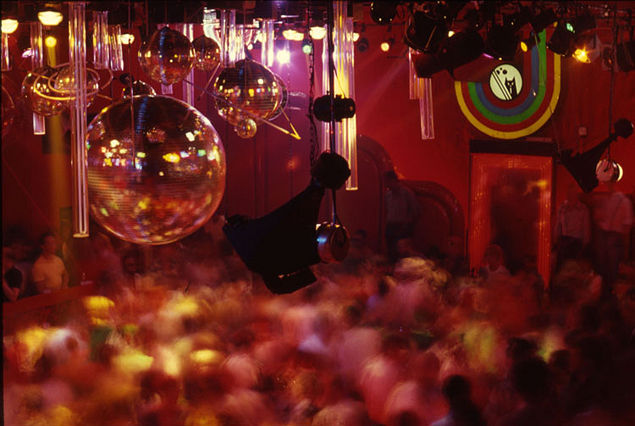
Photograph, Backstreet, circa 1975. Recognized by the round white sign bearing a black cat (depicted upper right), Backstreet began as Peaches Back Door in 1971. Located in the heart of Midtown at 845 Peachtree Street in the back room of Joe's Disco, Backstreet started and ended in 2003 as a private club. Always "open and pouring," it was one of the few 24-hour nightclubs in the city. Photographer unknown. Courtesy of the Kenan Research Center at the Atlanta History Center.
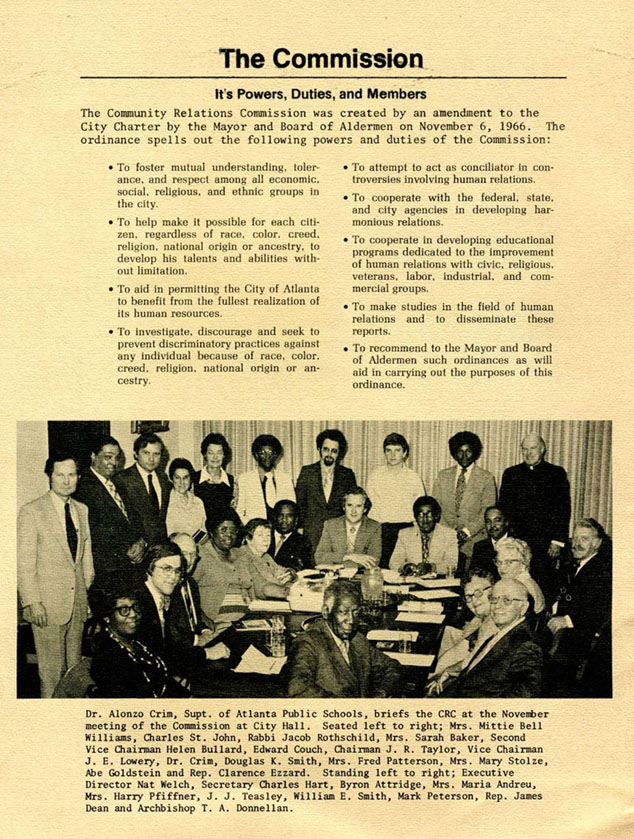
Annual report of the Community Relations Commission, 1973. Charles "Charlie" St. John, pictured seated second from left, served on the Community Relations Commission, an action group with a mandate to examine and report on race relations, investigate discrimination, and recommend ways to improve human relations. Appointed by Mayor Sam Massell in 1973, St. John became Atlanta's first openly gay, public figure. Shortly after, he was fired from his job at the
Atlanta Journal after handing out flyers for a gay rally. Courtesy of the Archives Division, Auburn Avenue Research Library on African American Culture and History, Atlanta-Fulton Public Library System.

Photograph, Jeanne Aland, left, and Fran Pici in Piedmont Park, 1975. Fran Pici was a cofounder of Red Dyke Theatre. Established in 1974 for women seeking new forms of entertainment beyond gay bars, members performed skits and experimental theater that tackled issues facing women and lesbians, and incorported music, photography, and film into their shows. Photographer unknown. Courtesy of the Kenan Research Center at the Atlanta History Center.
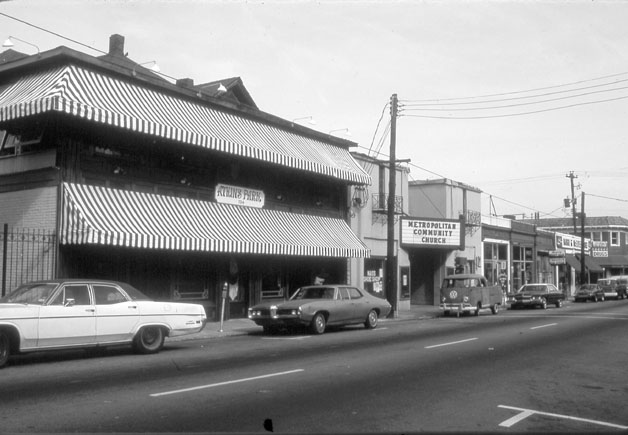
Photograph, Metropolitan Community Church, 1981. Within months of forming in Atlanta in 1972, the Metropolitan Community Church found its first permanent home on Highland Avenue in the Virginia Highland neighborhood east of Midtown. It remains an important community institution. Photographer unknown. Courtesy of the Kenan Research Center at the Atlanta History Center.
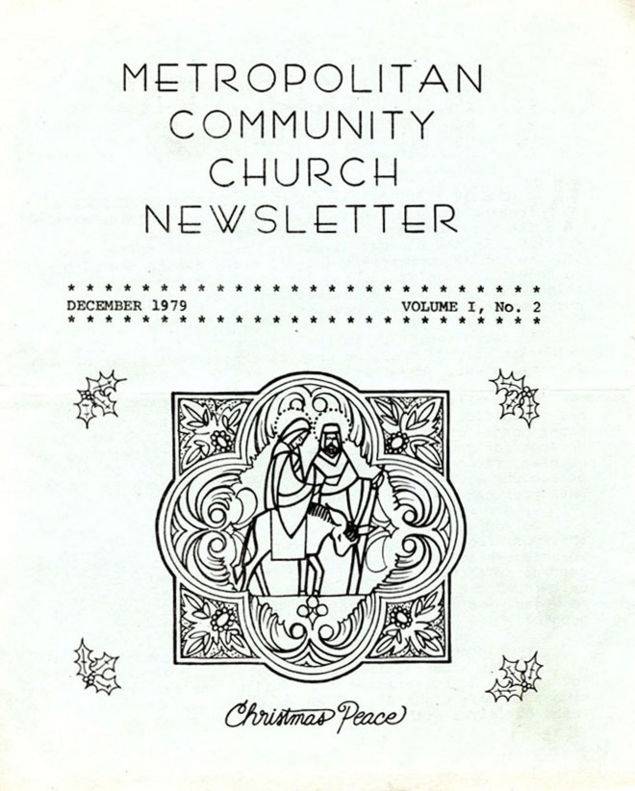
Newsletter, Metropolitan Community Church, Atlanta, Georgia, 1979. Courtesy of the Kenan Research Center at the Atlanta History Center.
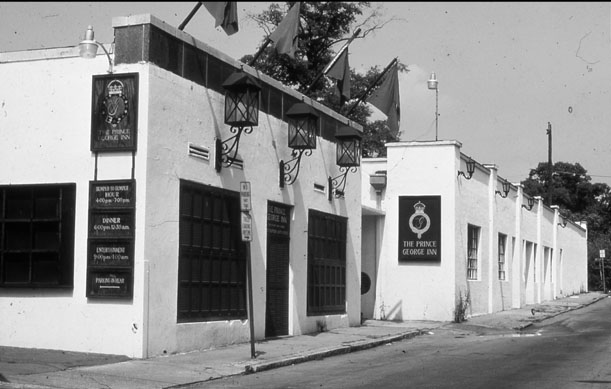
Photograph, Prince George Inn, circa 1978. Located at Sixth and Juniper Streets in Midtown near the Armory and Backstreet, the Prince George Inn was a popular lounge and restaurant catering to a mixed clientele. Numerous gay community organizations held meetings there. Courtesy of the Kenan Research Center at the Atlanta History Center.
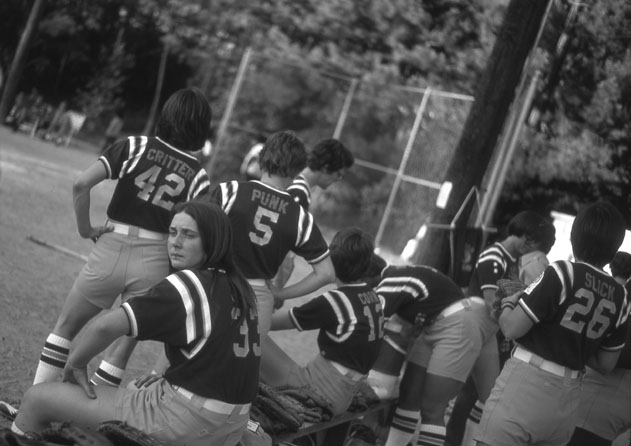
Photograph, Tower Hot Shots softball team, circa 1975. A hallmark of post-World War II lesbian culture, women's organized softball began in Atlanta in 1939 with the Lorelei Ladies. It was not until the 1970s, however, that Atlanta lesbians formed exclusively gay teams. Photographer unknown. Courtesy of the Kenan Research Center at the Atlanta History Center.
Throughout the 1970s, gay Atlantans developed a political voice through newspapers and magazines, while also founding cultural institutions that fostered greater awareness of LGBT issues and concerns nationally through books and programming. Bill Smith founded Atlanta’s first gay newspaper, the Atlanta Barb, later the Barb, in 1974; in January 1976, Richard Kavanaugh launched Cruise magazine. The former covered a spectrum of political and cultural issues, while the latter served as a monthly guide to the city’s gay bars and social activities. Charis Books and More, an independent feminist bookstore, opened in Little Five Points in 1974 and featured books aimed at lesbian readers. By the end of the decade, it was joined by Christopher’s Kind, a bookstore catering to a mostly gay male readership.
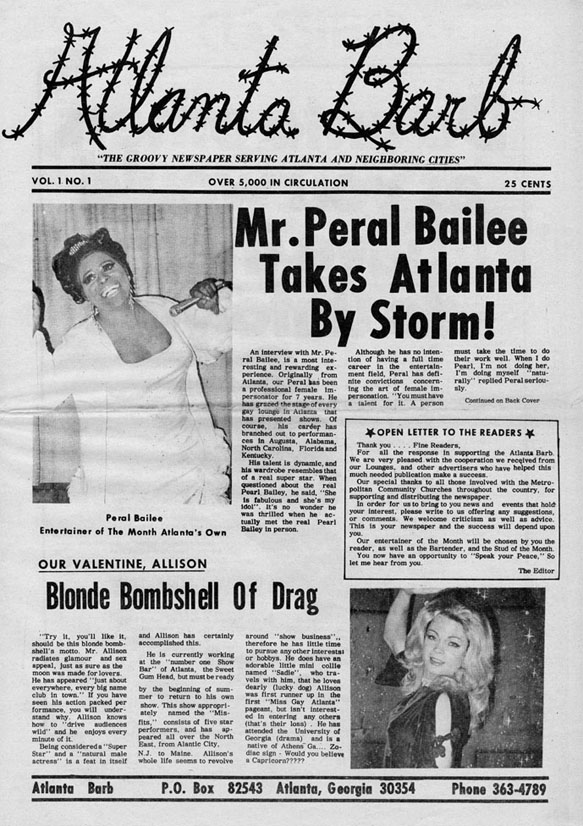
First issue,
Atlanta Barb, 1974. Courtesy of the Kenan Research Center at the Atlanta History Center.
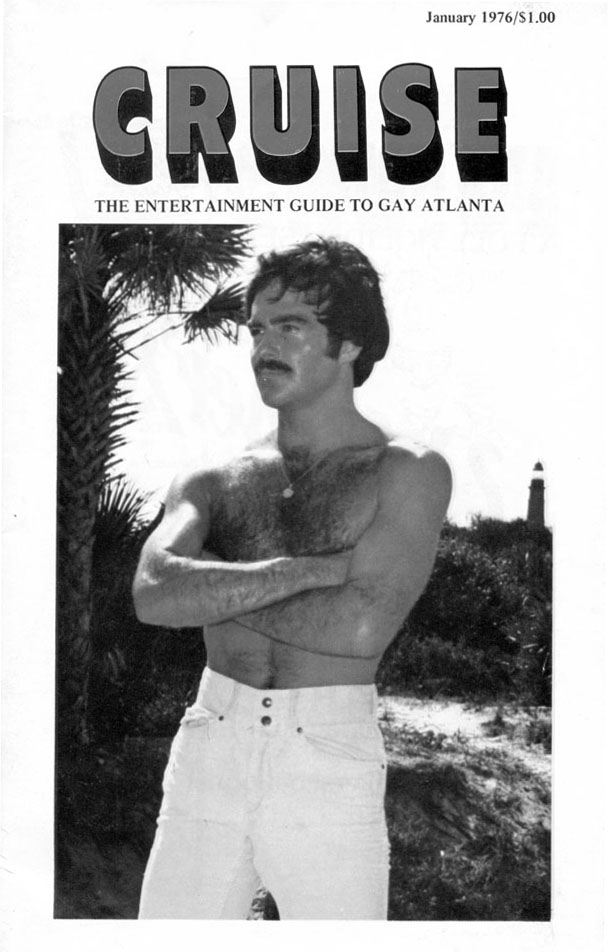
First issue, Cruise, 1976. Courtesy of the Kenan Research Center at the Atlanta History Center.
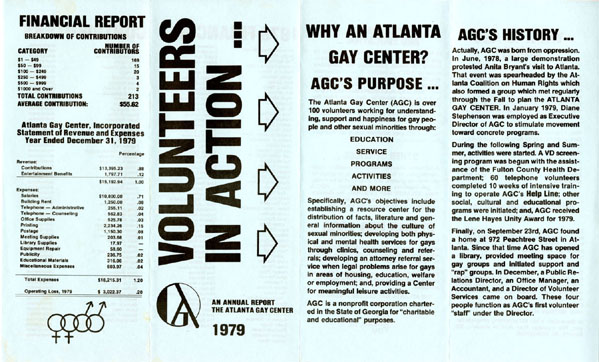
Annual report, Atlanta Gay Center, 1979. The Atlanta Gay Center was founded in 1978, based on plans created by a subgroup of the Atlanta Coalition on Human Rights, the organization that spearheaded a demonstration against Anita Bryant the same year. Courtesy of the Kenan Research Center at the Atlanta History Center.
A sign of the evolving political landscape, in the summer of 1977, Atlanta mayor Maynard Jackson issued a proclamation for “Civil Liberties Day” rather than “Gay Pride Day,” which he had supported the year before. This name change was intended to appease a vocal constituency of religious conservatives, most notably a group called Citizens for Decency. When Miami-Dade County passed a gay rights ordinance in 1977, Anita Bryant, beauty queen and Florida orange juice spokesperson, emerged as the leader of the fight to repeal the legislation. The “Save Our Children” campaign was carried out by fundamentalist Christians and social conservatives and became a flashpoint in the emerging culture war, energizing activists on both the right and the left across the country. In Atlanta, activists organized orange juice boycotts and invoked Bryant’s name and image derisively in pride marches and public protests.
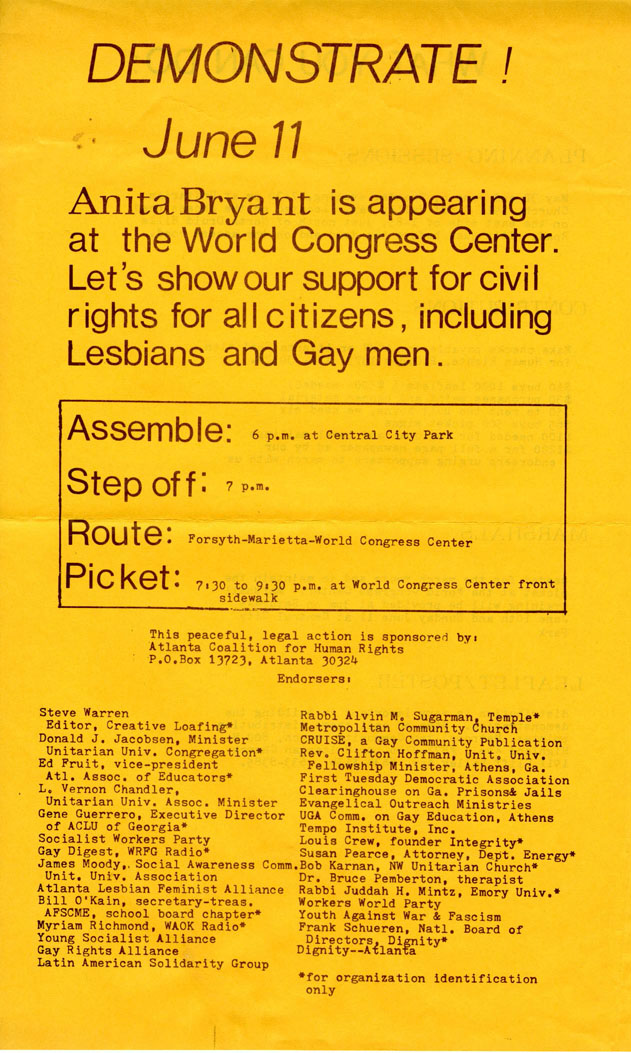
Flyer, Anita Bryant demonstration, 1978. Courtesy of the Kenan Research Center at the Atlanta History Center.

Photograph, Gay Pride march, 1977. Photographer unknown. Courtesy of the Kenan Research Center at the Atlanta History Center.

Photograph, Gil Robison, circa 1980. Gil Robison was among the founders of Atlanta's first gay political action committee, the First Tuesday Democratic Club, later the First Tuesday Association for Lesbian and Gay Rights, established in 1977. The organizers chose the name to commemorate the day the Miami-Dade County City Council passed a human rights ordinance including lesbians and gay men. Photographer unknown. Courtesy of the Kenan Research Center at the Atlanta History Center.

Newsletter, First Tuesday Association for Lesbian and Gay Rights, 1980. Courtesy of the Kenan Research Center at the Atlanta History Center.
Gay Atlantans increasingly addressed local concerns, while engaging in the emerging national movement. The first national March on Washington for gay and lesbian equality took place on October 14, 1979. Organized in response to several high-profile events, including the assassination of the openly gay San Francisco city supervisor Harvey Milk and Anita Bryant’s “Save Our Children” campaign, Atlantans actively participated, including John Howell, who served as president of the Virginia Highland Neighborhood Association and later was active in the Georgia AIDS Action Council, Legislate Equality for Gays and Lesbians (LEGAL), and Southeastern Arts, Media, and Education (SAME). At the local and national level that year, gay women and men commemorated the tenth anniversary of the Stonewall uprising and demonstrated the powerful symbolism of community. Nonetheless, at various points thoughout the decade white lesbians and African American gay women and men found themselves excluded from predominately white male community organizations and popular gathering places and created seperate spaces to socialize and organize.
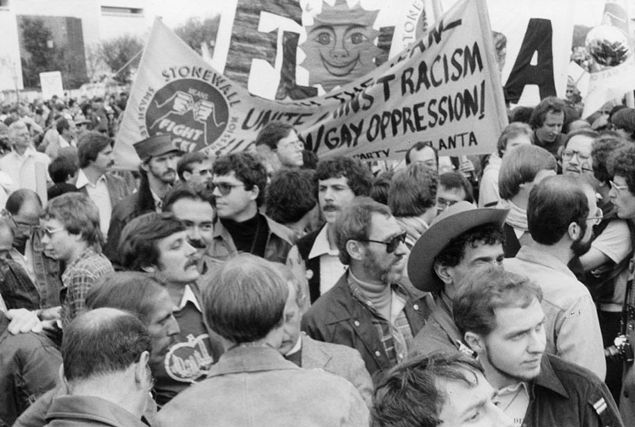
Photographs, Atlantans at the March on Washington, 1979. Photographer unknown. Courtesy of the Kenan Research Center at the Atlanta History Center.
Atlanta Since Stonewall, 1969-2009: A Local History
<comments />















